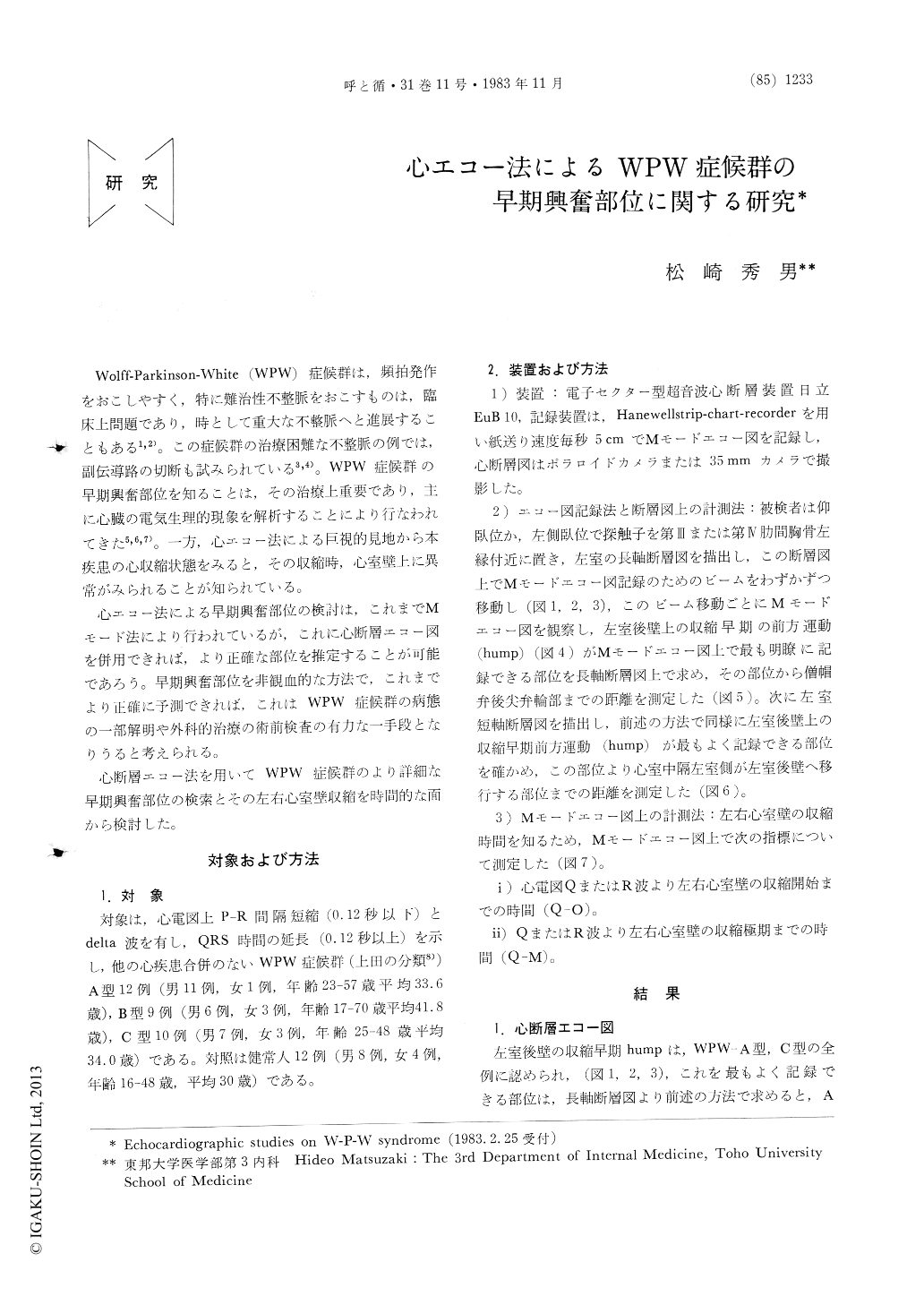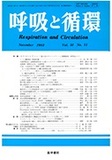Japanese
English
- 有料閲覧
- Abstract 文献概要
- 1ページ目 Look Inside
Wolff-Parkinson-White (WPW)症候群は,頻拍発作をおこしやすく,特に難治性不整脈をおこすものは,臨床上問題であり,時として重大な不整脈へと進展することもある1,2)。この症候群の治療困難な不整脈の例では,副伝導路の切断も試みられている3,4)。WPW症候群の早期興奮部位を知ることは,その治療上重要であり,主に心臓の電気生理的現象を解析することにより行なわれてきた5,6,7)。一方,心エコー法による巨視的見地から本疾患の心収縮状態をみると,その収縮時,心室壁上に異常がみられることが知られている。
心エコー法による早期興奮部位の検討は,これまでMモード法により行われているが,これに心断層エコー図を併用できれば,より正確な部位を推定することが可能であろう。早期興奮部位を非観血的な方法で,これまでより正確に予測できれば,これはWPW症候群の病態の一部解明や外科的治療の術前検査の有力な一手段となりうると考えられる。
Two-dimensional and M-mode echocardio-graphic examinations were performed to presume areas of anterior motion (early systolic hump) of left ventricular wall in patients with WPW syndrome. There were 12 patients with type A, 9 patients with type B, 10 patients with type C WPW syndrome and 10 normal subjects. The areas, where early systolic hump of the left ventricular wall could be recorded clearly, were probed by using M-mode echocardiography in two-dimensional echocardio-gram on picture tube, and the two-dimensional echocardiograms showing the area were recorded. Distance from the area to the posterior mitral valve ring was measured in the two-dimensional echocardiogram, and relationship of contraction time of both ventricular walls also were examined in M-mode echocardiograms.
The early systolic humps were recognized in all of type A and type C WPW syndrome. Those distances were 2.6±1.0 cm on an average in type A WPW, 1.7±0.7 cm on an average in type C WPW toward apex from the posterior mitral valve ring in long-axis view of the two-dimensional echocardiogram. And those distances were 2.4±0.7 cm on an average in type A WPW, 0.4±0.4 cm on an average in type C toward the left ventricular wall from junctional area between interventricular septum and posterior left ventricular wall in short axis view of the two-dimensional echocardiogram. The early systolic humps were recognized widely in the posterior left ventricular wall in type A WPW, and mostly in the junctional area between the interventricular septum and the posterior left ventricular wall in type C WPW.
In relationship of contraction time of both ventricular walls in M-mode echocardiogram, the beginning of wall contraction was earlier in the left ventricle than in the right ventricle in type A and type C WPW, and in the right ventricle than in the left ventricle in type B WPW.
The period in which both ventricles get to the maximum systole was shorter in the left ventricle than in the right ventricle in type A and type C WPW, and shorter in the right ventricle than in the left ventricle in type B WPW, although the period was almost same in normal subjects. This shows that the maximum systole of both ventricles in WPW syndrome didn't correspond.

Copyright © 1983, Igaku-Shoin Ltd. All rights reserved.


